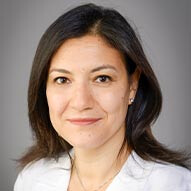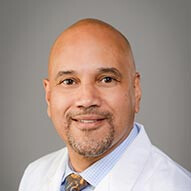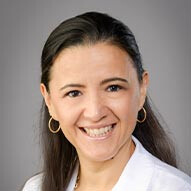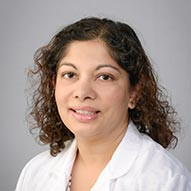Pediatric Non-Alcoholic Fatty Liver Disease
Nonalcoholic fatty liver disease (NAFLD) has rapidly become the most common cause of liver disease in children. This is partly because of the recent increase in childhood obesity.
NAFLD is a condition in which fat builds up in the liver. If NAFLD isn’t treated, it can lead to a serious condition called non-alcoholic steatohepatitis (NASH). This can cause scarring (fibrosis), cirrhosis and liver failure.
This might sound scary, but there is good news: Children can reverse NASH by eating healthier and exercising. Children’s Health℠ can help your child and family make lifestyle changes that start the path to recovery.
The treatment process starts with tests that look for liver disease. We use advanced imaging and (if needed) innovative biopsy techniques to diagnose NAFLD. Then we bring together gastrointestinal specialists, dietitians and a psychologist to help your child make lasting dietary and lifestyle changes.
Treatments and Services
Early diagnosis is key
NAFLD can be hard to diagnose because it may not cause symptoms. Children between 9 and 11 years old with obesity (or who have a family history of fatty liver) should be screened using an alanine aminotransferase (ALT) test. ALT is an enzyme usually found in the liver. This blood test usually only takes a few minutes.
If the test shows elevated ALT levels, your child may need additional blood tests, or an ultrasound or MRI scan. These help doctors rule out other conditions and determine if there are fat deposits on the liver.
If a liver biopsy is needed, we use endoscopic ultrasound-guided biopsy – a procedure that has no incisions, so kids can recover faster than with traditional biopsies. During the biopsy, your child’s GI doctor will get a small sample of their liver tissue. The procedure takes less than an hour and your child will be under general anesthesia the entire time, so they won’t be in pain.
While fatty liver disease is dangerous over the long-term, it is a disease you can work to improve. The liver is an interesting organ and capable of regenerating and recovering – if healthy lifestyle changes are made.
Helping your family make healthy choices
There’s no medication to reverse NAFLD, but healthy lifestyle choices can make a big difference. We know your child might need a little extra guidance on how to make those changes. That’s why we’ll connect you and your child with a dietitian.
The dietitian will explain why some foods – like chips, sodas and sports drinks – are unhealthy. Teaching kids about how foods affect their liver gives them the tools to make better choices. Together, we’ll come up with a plan that involves fewer calories, less sugar and fat, and plenty of physical activity.
Along the way, a team of specialists will work together to create a personalized treatment plan that helps your child change their lifestyle, lose weight and reduce liver fat. We see most children for follow-up visits every three or four months to monitor their health and help them make progress. These visits can continue for a year or longer, depending on the diagnosis.
Early diagnosis is key
NAFLD can be hard to diagnose because it may not cause symptoms. Children between 9 and 11 years old with obesity (or who have a family history of fatty liver) should be screened using an alanine aminotransferase (ALT) test. ALT is an enzyme usually found in the liver. This blood test usually only takes a few minutes.
If the test shows elevated ALT levels, your child may need additional blood tests, or an ultrasound or MRI scan. These help doctors rule out other conditions and determine if there are fat deposits on the liver.
If a liver biopsy is needed, we use endoscopic ultrasound-guided biopsy – a procedure that has no incisions, so kids can recover faster than with traditional biopsies. During the biopsy, your child’s GI doctor will get a small sample of their liver tissue. The procedure takes less than an hour and your child will be under general anesthesia the entire time, so they won’t be in pain.
Helping your family make healthy choices
There’s no medication to reverse NAFLD, but healthy lifestyle choices can make a big difference. We know your child might need a little extra guidance on how to make those changes. That’s why we’ll connect you and your child with a dietitian.
The dietitian will explain why some foods – like chips, sodas and sports drinks – are unhealthy. Teaching kids about how foods affect their liver gives them the tools to make better choices. Together, we’ll come up with a plan that involves fewer calories, less sugar and fat, and plenty of physical activity.
Along the way, a team of specialists will work together to create a personalized treatment plan that helps your child change their lifestyle, lose weight and reduce liver fat. We see most children for follow-up visits every three or four months to monitor their health and help them make progress. These visits can continue for a year or longer, depending on the diagnosis.
Meet the Care Team
 Amal Aqul, MDPediatric Hepatologist
Amal Aqul, MDPediatric Hepatologist Charina Ramirez, MDPediatric Gastroenterologist
Charina Ramirez, MDPediatric Gastroenterologist Norberto Rodriguez-Baez, MDPediatric Hepatologist
Norberto Rodriguez-Baez, MDPediatric Hepatologist Isabel Rojas Santamaria, MDPediatric Gastroenterologist
Isabel Rojas Santamaria, MDPediatric Gastroenterologist Meghana Sathe, MDPediatric Gastroenterologist
Meghana Sathe, MDPediatric Gastroenterologist
